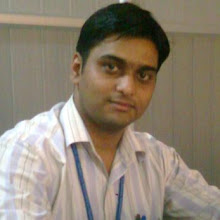An Israeli company will provide an advanced bionic vision device to help millions of blind people see the world.
Herzilya-based Nano Retina is developing a prototype medical device, that "if all goes well" could be an answer to the prayers of people worldwide who suffer from impaired eyesight and blindness due to age-related macular degeneration (AMD), diabetes, retinopathy, retinitis pigmentosa, and related illnesses.
The start-up, founded in 2009, aims to make a science-fiction staple, bionic vision, a la Geordi La Forge in Star Trek, a reality within the next few years.
But they want to go further by building a simpler, smaller, lighter and less invasive device.
The heart of the system is a wi-fi - powered chip about the size of a child's fingernail that is attached over the damaged retina within the eyeball. The 30-minute operation would be a relatively simple surgical procedure, similar to a cataract procedure, in which a five millimeter incision is made in the sclera, and the device slid inside and glued to the retina, according to the company.
The potential market for the device and the number of people it could help will simply be immense.
According to the World Health Organization, as of 2010, 285 million (65 percent of whom are aged over 50 years) suffer some degree of visual impairment, and 39 million are estimated to be blind (82 percent over 50). The top three causes are cataracts, glaucoma and age-related macular degeneration.
The device, which the firm calls Bio-Retina, is powered via a small battery mounted in a normal-looking pair of eyeglasses that broadcasts an under-one-milliwatt WiFi signal.
Ra'anan Gefen, Nano-Retina's managing director, told Xinhua on Monday that the "electronic radiation at that level is equivalent to sunlight," and poses no risk to the user.
Bio-Retina then uses the power to operate like a digital camera 's image recording chip: light naturally entering through the pupil falls on the chip, which then sends a 24x24 black and white pixel image via a series of nano-scale electrodes enmeshed within the optic nerve to the brain.
The company believes that full-sight, within the equipment's range, would begin immediately.
Later versions are aiming for 72x72 resolution, according to the firm, with enough resolution to read a large-font book, watch television or engage in similar activities -- essentially giving the blind and near blind back their vision.
While there are close to a dozen groups around the world attempting to come up with similar devices, and with varying degrees of success, Gefen said that the uniqueness of their idea is the number of pixels crowded on the sensor, and the way it's glued within the eyeball, as opposed to sutures, wires and heavier battery packs that other designs use.
"We are working in this incredible, ultra low-power arena, and ours is better than the next best by a factor of ten," Gefen said with pride, adding that "One competitors' model is something like ten volts "that's something like a car battery."
The firm has already demonstrated proof of concept, and Gefen said "we're working on a prototype to show the image end-to-end," and hope to start clinical trials on humans by 2013.
"We're trying to return to the blind a greater sense of independence; to be able to identify the person in front of you visually. The difference is being able to distinguish images, instead of just light and dark," Gefen told Xinhua.










